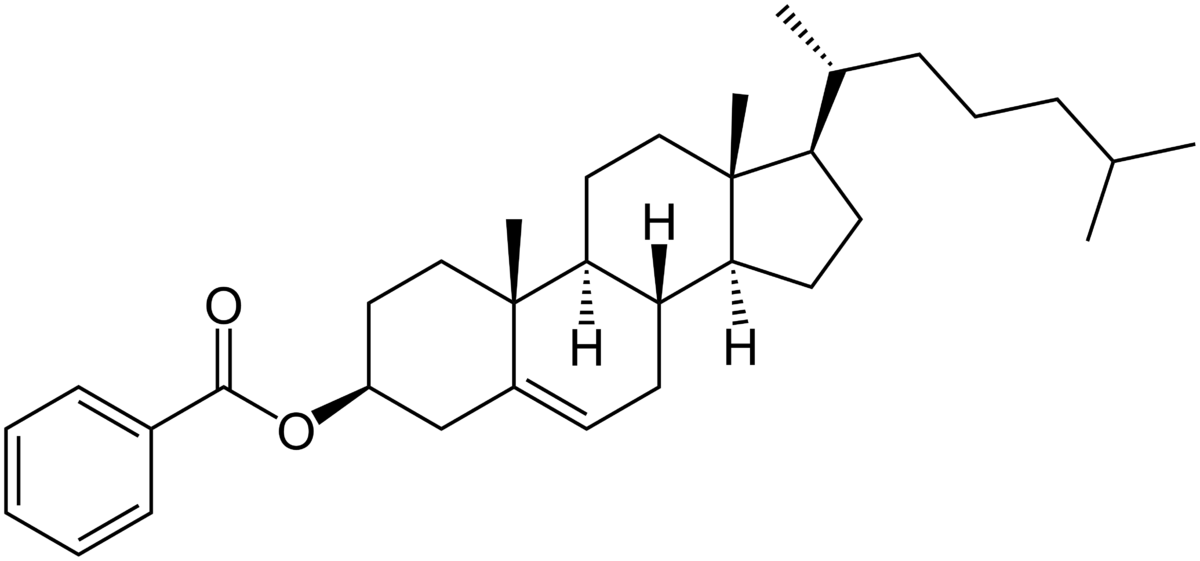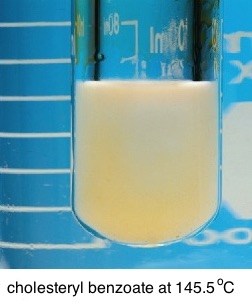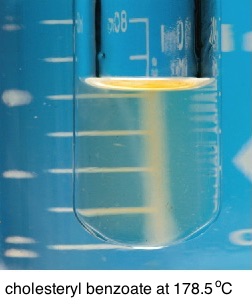A.4 Liquid crystals
Written specifically for students to provide help and support for the IB Diploma chemistry programme this page provides full coverage of the syllabus content of Option A - sub topic A.4. It encourages you to think critically and provides many questions with full worked answers so that you can monitor and improve your knowledge and understanding.


 Learning outcomes
Learning outcomes
After studying this topic you should be able to:
 Understand:
Understand:
- Liquid crystals are fluids with physical properties (electrical, optical and elasticity) which depend upon molecular orientation to a fixed axis in the material.
- Thermotropic liquid crystals are pure substances that show liquid crystal behaviour over a range of temperature.
- Lyotropic liquid crystals are solutions which show the liquid-crystal state over a range of concentrations.
- The nematic liquid crystal phase is characterized by rod-shaped molecules that are distributed randomly but on average align in the same direction.
- Discuss the properties required for a substance to be used in liquid-crystal displays (LCD).
- Explain liquid-crystal behaviour on a molecular level.
Relationships & vocabulary
Nature of science
The discovery of liquid crystals is a good example of serendipity in science. They were discovered accidently by the Austrian botanist and chemist Friedrich Reinitzer (1857 - 1927) whilst experimenting on cholesteryl benzoate in 1888.
International-mindedness
The production of many electronic goods is concentrated in areas of the world where poor working conditions may prevail. This raises the issue as to whether there should be internationally accepted labour standards for all workers, and, if so, what implications this would have on the price of consumer goods?
Vocabulary
| serendipity | thermotropic | lyotropic | nematic liquid crystal phase |
| twisted nematic geometry | biphenyl nitrile | smectic phase | liquid crystal display (LED) |
Learning slides
You can use this slide gallery for learning or for reviewing concepts and information. It covers all the key points in the syllabus for this sub-topic.
Something to think about
The Nature of Science section for this sub-topic uses Reinitzer’s discovery of liquid crystals as an example of serendipity. In 1888 Reinitzer synthesised a new compound - cholesteryl benzoate.

cholesteryl benzoate (Image from Wikimedia commons)
In order to show that it was pure he needed to determine the melting point and was surprised to find that it appeared to have two different melting points. At 145.5 oC the white solid crystals melted into a cloudy liquid, which remained stable when heated further until178.5 oC. At this point the cloudiness disappeared to form a clear transparent liquid.


In fact it was one of his colleagues, Otto Lehmann, who realised that whilst the clear liquid had the isotopic properties and the disordered state of all liquids the cloudy liquid was a new state of matter intermediate between a solid and a liquid. He coined the label ‘liquid crystal’ to describe this new state of matter in which the properties depend upon direction even though the state is liquid.
As is sometimes the case with serendipitous discoveries it was initially seen as an interesting but not particularly useful fact and no real advances in the chemistry of liquid crystals was made until about 80 years later. The first commercial use of liquid crystal displays was not until the 1960s where they became incorporated into Swiss watches. Since then they have almost become ubiquitous and have made cathode rays tubes (which originally produced the pictures in televisions) virtually obsolete.
Test your understanding of this topic
(Note that your teacher may have restricted your access to some or all of these questions and worked answers if they are going to use them as a class test or set them as an assignment.)
For ten 'quiz' questions (for quick testing of knowledge and understanding with the answers explained) see MC test: Liquid crystals.
For short-answer questions see Liquid crystals questions together with the worked answers on a separate page Liquid crystals answers.
More resources
1. A good article from the official website of the Nobel Prize on ![]() The history and properties of liquid crystals. It also includes some embedded informative short videos.
The history and properties of liquid crystals. It also includes some embedded informative short videos.
2. A lecturer from the University of Hull explains liquid crystal displays using some wool, pasta, a bottle of water, a hair dryer and some stair gates. Who says you need expensively equipped labs to explain chemistry! This is real supermarket chemistry.
3. Fancy building your own liquid crystal display? This video by Ben Krasnow describes liquid crystals and what happens when you put them between polarizers. It includes a good description of how LCDs work.
![]() Building your own liquid crystal display
Building your own liquid crystal display

 IB Docs (2) Team
IB Docs (2) Team 














